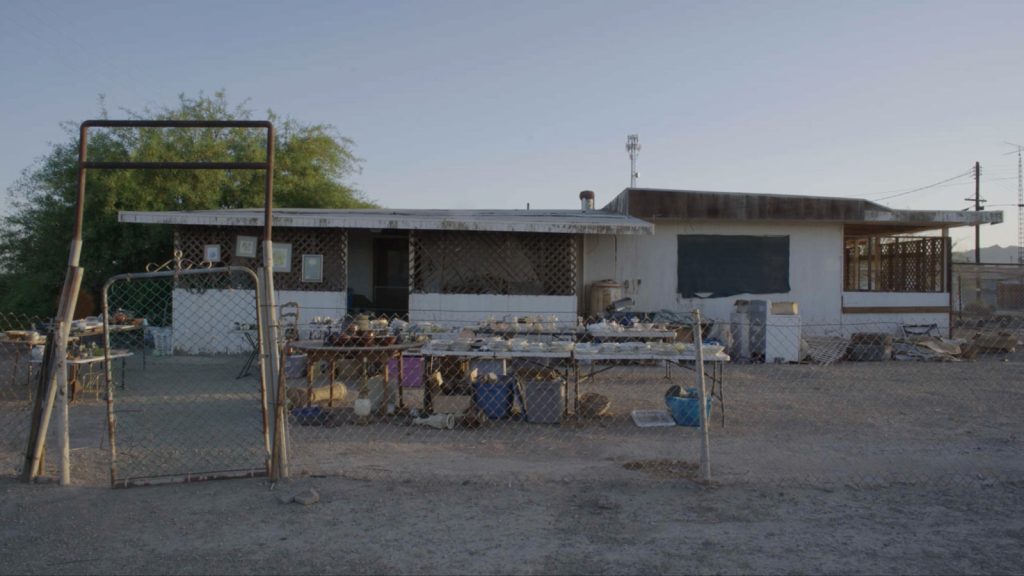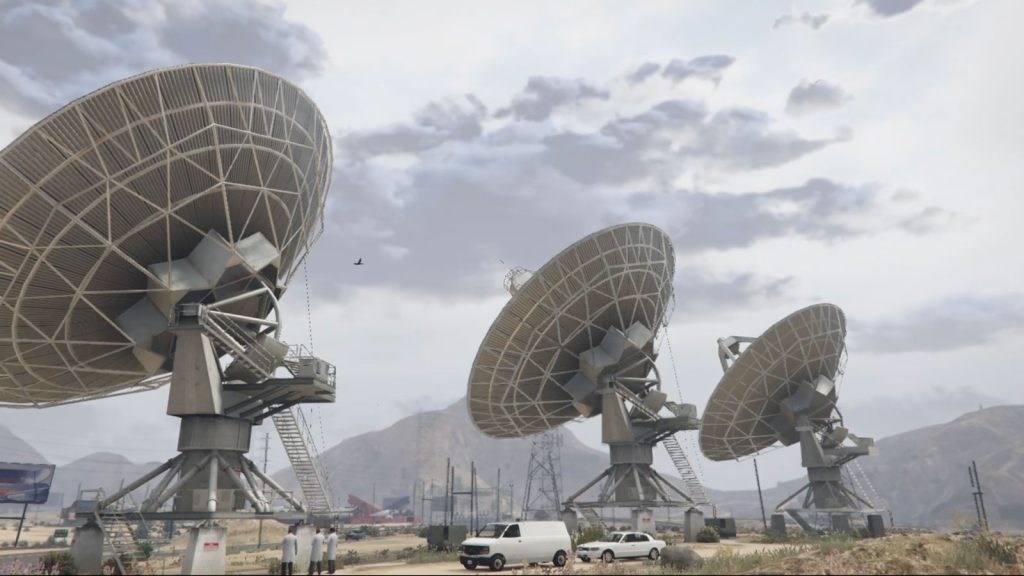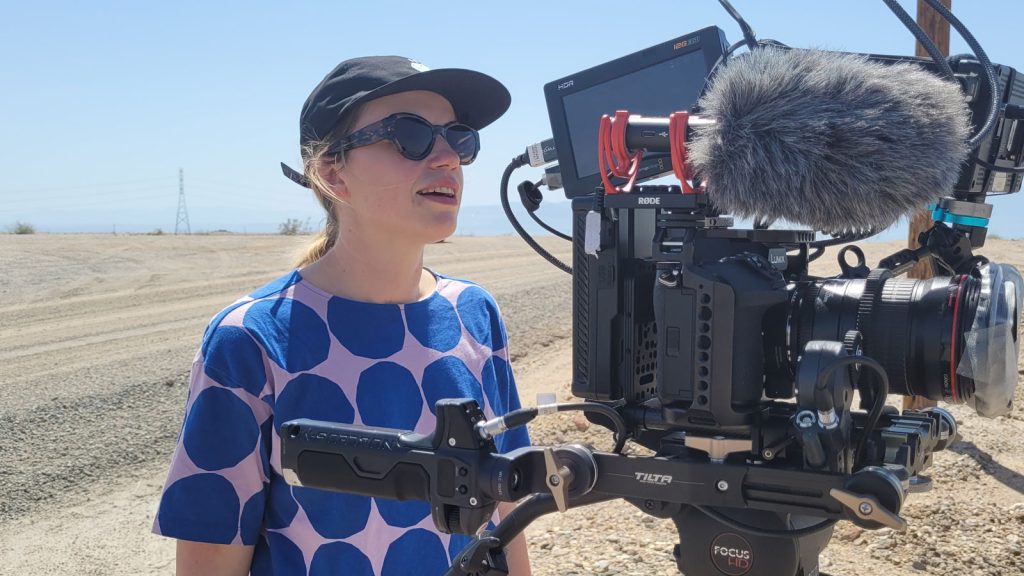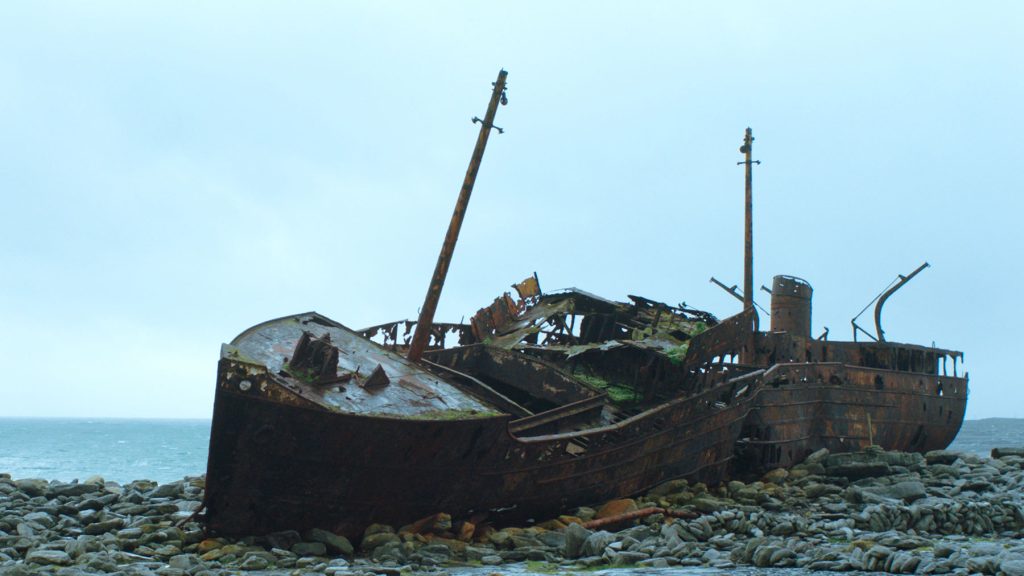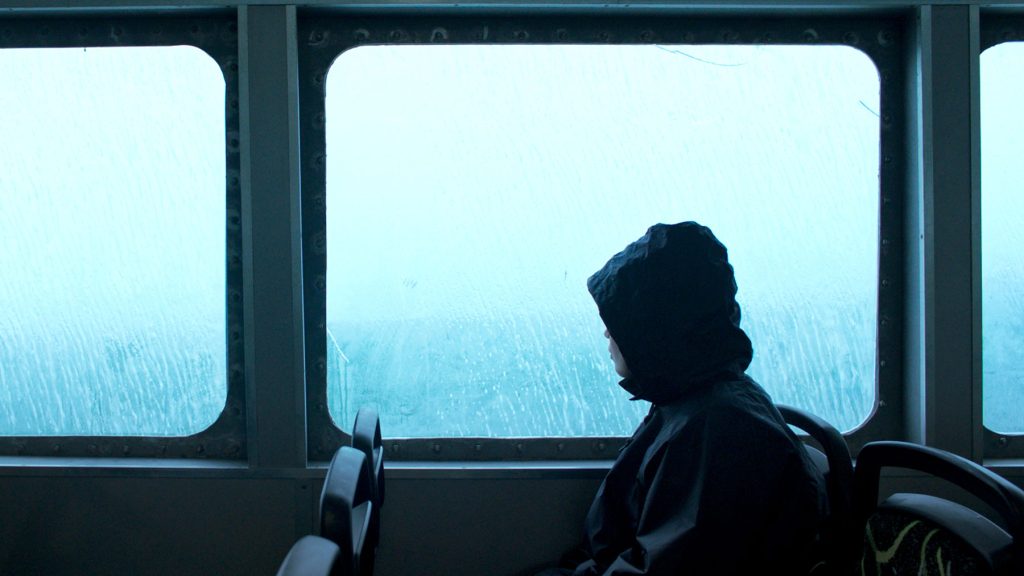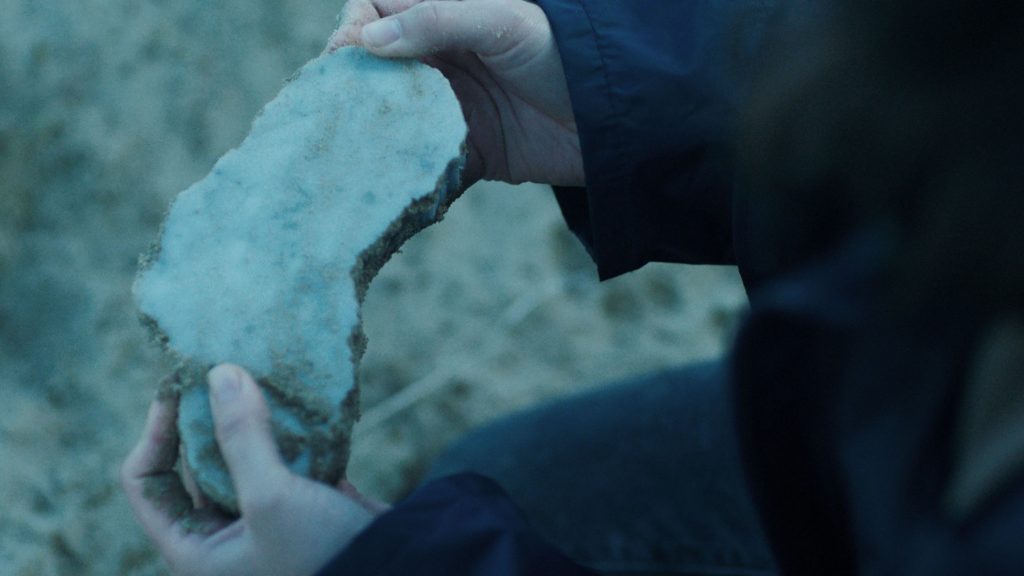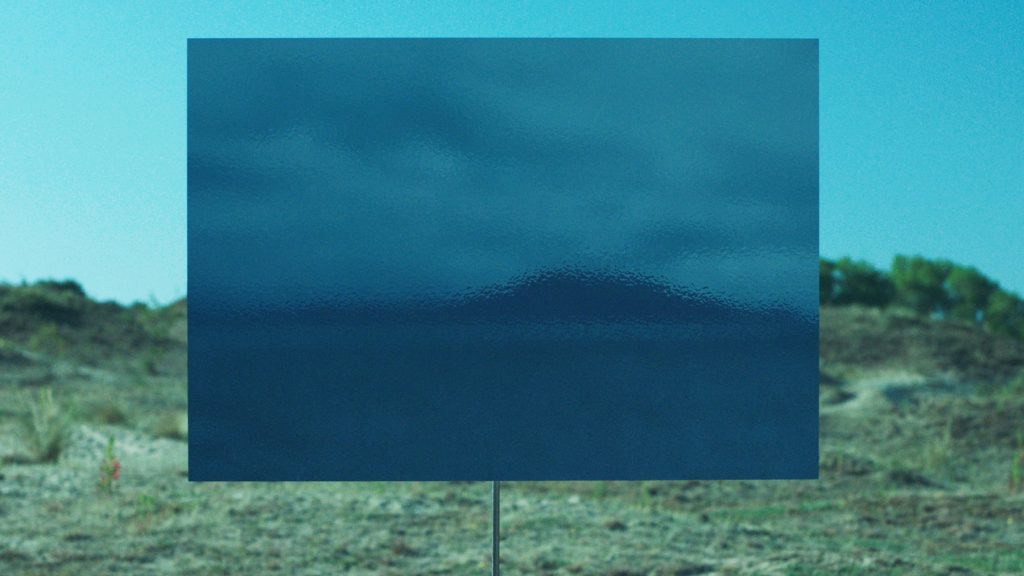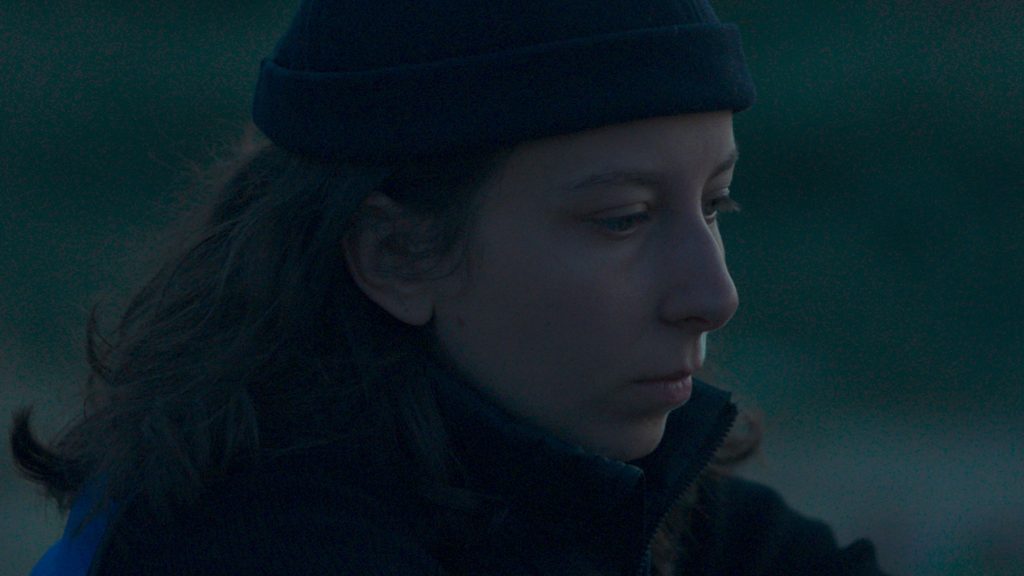Drop! Cover! Hold On!
by Stéphanie Roland
Logline
The Big One.
The ultimate earthquake.
A silent, endless state of emergency.
Fault lines eluding us.
They build their lives, their fictions,
their dreams and their prophecies along it.
They observe it; they fear it, and then they forget it.
They fall asleep on it every night.
When will it awaken them?
Abstract
Situated in California at the junction of the Pacific and North American tectonic plates, San Andreas is a geological fault line. Although this great fault, upon which San Francisco and Los Angeles were built, is already provoking regular earthquakes, seismologists are now predicting The Big One, a devastating earthquake that could permanently destroy the region, and which will probably occur before 2035.
Drop! Cover! Hold on! is a multi-layered story about the San Andreas Fault, a geological phenomenon very close to the Hollywood film studios. The overlapping storylines reflect the geological layers of these mythical landscapes. The film becomes a mosaic of different stories that come together to paint a broader portrait of the concept of earthquakes, somewhere between reality and fiction, between reality and the virtual world, and between geography and emotions. All of a sudden, the fiction splits open, unveiling invisible terrestrial phenomena and human existential rifts in anticipation of an earthquake.
Topic Summary
Situated in California at the junction of the Pacific and North American tectonic plates, San Andreas is a geological fault line. Although this great fault, upon which San Francisco and Los Angeles were built, is already provoking regular earthquakes, seismologists are now predicting The Big One, a devastating earthquake that could permanently destroy the region, and which will probably occur before 2035.
I am troubled that such a densely populated and economically and politically powerful region is sitting on a fault line that could devastate it in a matter of minutes. I’m particularly interested in natural disasters and the way in which our memories of these incidents are modelled, but I’m also fascinated by the human mind’s ability to anticipate catastrophes, sometimes to the point of fantasising about them. Why do people remain in places where disasters are so probable? The documents in this film are woven together to broach themes of destruction, protection, experience, and resilience in regions marked by age-old cycles of human vulnerability to natural disasters.
San Andreas is also a fictional state in the video game Grand Theft Auto (GTA). Its topographical and urban characteristics are loosely based on several regions of the United States, including California and Nevada, as well as Arizona and Dakota. As you progress through the video game, you come across traces of earthquakes and fault lines. Sandy Shores, one of the game’s fictional towns, is a near-identical replica of Bombay Beach. This settlement of caravans and makeshift shelters borders the Salton Sea, the scene of an ecological disaster where pesticides have contaminated the air and made bathing poisonous. Below this village, the San Andreas fault begins… along with the rest of our journey.
The stories, realities, rumours, fears, and paranoia surrounding this phenomenon echo the Hollywood film industry. It is inevitable that Hollywood will be severely and profoundly impacted if the Big One happens, considering the proximity of its studios to San Andreas. Metaphorically speaking, we could regard this as a flaw in the Hollywood studio film system. The latter has undergone major changes since its heyday, and the industry is currently undergoing radical changes, particularly since the emergence of streaming platforms as a broadcasting medium.
Los Angeles is the perfect playground for this project, which veers between reality and fiction. In his film Los Angeles Plays Itself, Thom Andersen draws a portrait of Los Angeles using the many film sequences shot there. The film industry has left a lasting impression on the city’s urban landscape, transforming it into a kind of 1:1 city-film studio, where streets and film sets routinely overlap, and where social networks, news stories and the entertainment industry continuously intersect seamlessly. Sociologist and radical urban theorist Mike Davis describes it as an urban laboratory of the future for analysing globalisation and its impact on our cities.
The various definitions of the term “fault” caught my attention:
1. A crack in the earth’s surface where the rock has divided into two parts that move against each other;
2. The responsibility for something wrong that has happened or been done;
3. Something that is wrong with a machine or system that stops it from working correctly;
4. An unattractive or unsatisfactory feature, especially in a piece of work or in a person’s character.
There are similar definitions for the French word. Beyond the geological definition, the word evokes notions of guilt, failure, dysfunction, and physical defect. I feel that the semantic shifts around this polysemous term are interesting and will be woven throughout the film set in the Californian environment, where the connection with the body, success, and performance is so strong.
Artistic Approach
How do we create new narratives in the era of post-truth? In this project, different types of images will intersect to reflect a complex and fragmented reality, a mosaic portrait of a fault line inaccessible to the eye. Using scientific imagery, computer-generated imagery inspired by video games, internet footage, archive footage, and filming with a small documentary crew along the fault line, in the manner of an experimental road trip.
Scientific imaging: a vehicle for the invisible
Recently, there have been significant breakthroughs in the scientific community in the visualisation of earthquakes and the earth’s crust. I have met with many experts working in this area. I’d like to adopt the processes they use to experiment with the creation of new moving images (micro-cameras penetrating rocks, high-resolution remote sensing using radar, etc.). These techniques would allow greater proximity and a connection with the mineral elements, in order to give them a stronger voice.
Video game-inspired computer graphics (GTA)
I want to sneak inside the other side of the GTA video game set, when the stage is devoid of any action scenes, featuring GTA extras who wander around slowly, with no real intentions, in this meta mode, lost in virtuality. The effect would be as realistic as possible, providing a sense of déjà vu, akin to the scenes filmed with the crew in documentary mode. Some characters or details from the documentary shoot would be modelled for use in the 3D shoot, producing a subtle interplay between reality and virtuality.
Geological optics
As part of my artistic practice, I started developing my own homemade experimental cameras and lenses for filming and creating fictional archives/documents. For example, for my previous film, Le cercle vide, I created a special camera for filming in water, combining a sonar and an astronomical instrument. For this new project, I’d like to develop camera filters made from geological substances mined from the fault, or to experiment with geological optics for filming the fault. A visual description of the artistic approach is provided in the “upload additional material” section.
Podesta Island – Stéphanie Roland
About Stéphanie Roland
Stéphanie Roland is a Brussels-based visual artist and filmmaker. Hovering between documentary and imaginary, her films and installations explore the invisible structures of the Western world, the large scales of time, and hyperobjects. She draws her inspiration from a wide range of subjects, from environmentalism and politics to geology and the cosmos.
Having graduated from Brussels’ La Cambre and studied with Hito Steyerl at the UDK Berlin, she completed a course in France at Le Fresnoy – Studio national des arts contemporains. Her projects regularly feature in exhibitions at internationally renowned institutions, such as the Venice Biennale, the Centre Pompidou, the Louvre, the Benaki Museum, the Botanique, the Kampala International Art Biennale, Wiels, and ISELP. Breda Photo, Belfast Photo Festival, Manifesto, Encontros da Imagem, BIP Liège, MOPLA, and Unseen are some of the photography festivals in which she has participated.
Her films have been shown at international festivals such as Visions du Réel, FID Marseille, Festival dei Popoli, ZINEBI Bilbao, FEST New Directors / New Films, Rencontres Internationales Paris / Berlin, Curtas Cinema and PÖFF Shorts Tallin black nights, to name but a few.
Her first film, Podesta Island, won the Alice Guy prize at the FID Marseille while her second, Le cercle vide, won the TËNK prize at the Visions du Réel festival in Nyon.
The Empty Sphere – Stéphanie Roland

